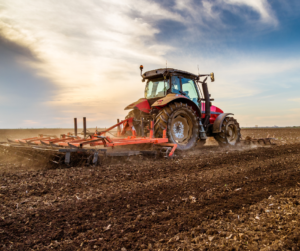Get your 2024 Crops Up and Away: Navigating the Challenges of Spring Planting
As the 2024 farming season unfolds, growers focusing on spring-drilling face unique challenges and opportunities. This guide is specifically tailored for those ready to plant in spring, offering insights and strategies to help you make the most of this critical season for arable farmers.
 Preparing your soil: a spring perspective
Preparing your soil: a spring perspective
Following the winter months, properly preparing your soil in early spring is crucial for the success of spring-drilled crops.
- Early soil testing: Conduct soil testing as early as possible. This will guide your fertilisation and conditioning strategies, ensuring your soil is ready for spring planting.
- Soil warming and drying: Given the UK’s typically wet winters, allowing your soil to warm and dry adequately before drilling is key. Consider techniques like minimal tillage to help with soil structure and moisture management.
See here for further information on the importance of soil testing and how to test.
Choosing the right spring crops
Selecting crops for spring drilling involves pinpointing which varieties perform best on your farm in the UK’s spring conditions, as well as considering market demand.
- Spring barley and wheat:
- Spring barley: Ideal for later sowing, spring barley is a versatile choice, often used for brewing and livestock feed. It is less susceptible to diseases like rust and can be sown until late April, offering flexibility in planting schedules.
- Spring wheat: Though less common than winter wheat, spring wheat offers a shorter growing period, making it a good option for fields that are too wet to be cultivated until later.
- Pulses and oilseeds:
- Pulses (peas and beans): These are excellent for improving soil fertility as they fix nitrogen, reducing the need for synthetic fertilisers. Fava beans and field peas have a growing market in the UK, especially in the health food sector. They also provide a break crop option, helping to disrupt pest and disease cycles.
- Oilseed rape: A more challenging but potentially profitable choice, oilseed rape requires careful management but offers high returns. It is essential to monitor for pests, like flea beetles, and manage flowering to maximise yield.
Considerations for selection:
- Climate suitability: Choose varieties that are known to perform well in the UK’s variable spring weather, with resistance to common diseases and pests.
- Rotation fit: Consider how these crops fit into your crop rotation, especially regarding soil health and pest/disease management.
Sustainable practices for spring drilling
Farmers looking to improve the sustainability of their operations should consider options for spring sown crops that improve soil health and structure.
- Green manures are a type of cover crop grown within the arable rotation primarily to build soil organic matter and improve structure.
- These crops, such as clover, vetch, or rye, not only prevent soil erosion during winter months but also enrich the soil with essential nutrients as they decompose.
- They improve soil structure, enhance water retention, and encourage beneficial microbial activity. This results in a healthier, more robust soil environment, providing an optimal foundation for spring-sown crops.
- Integrated Pest Management (IPM): Spring crops are often vulnerable to a variety of pests, which can significantly impact yield and quality. Implementing an IPM approach is crucial.
- This strategy involves monitoring pest populations, understanding their life cycles, and using this information to implement targeted control methods that are environmentally sensitive.
- The goal of IPM is to manage pest populations at acceptable levels with minimal environmental impact, ensuring a sustainable and productive spring crop.
See here for further information on cover crops and integrated pest management.
By preparing your soil correctly, choosing the right crops, utilising technology, and staying informed, you can maximise the potential of your spring planting.


